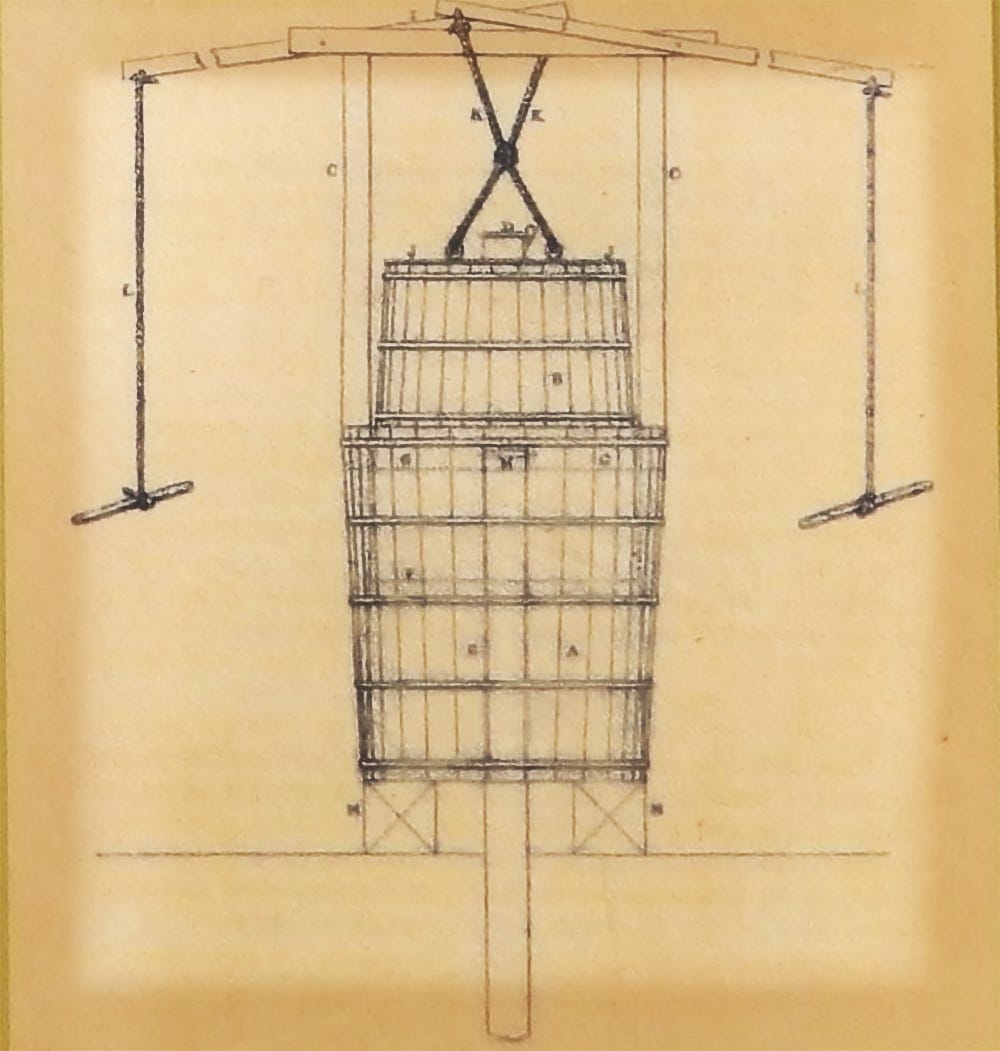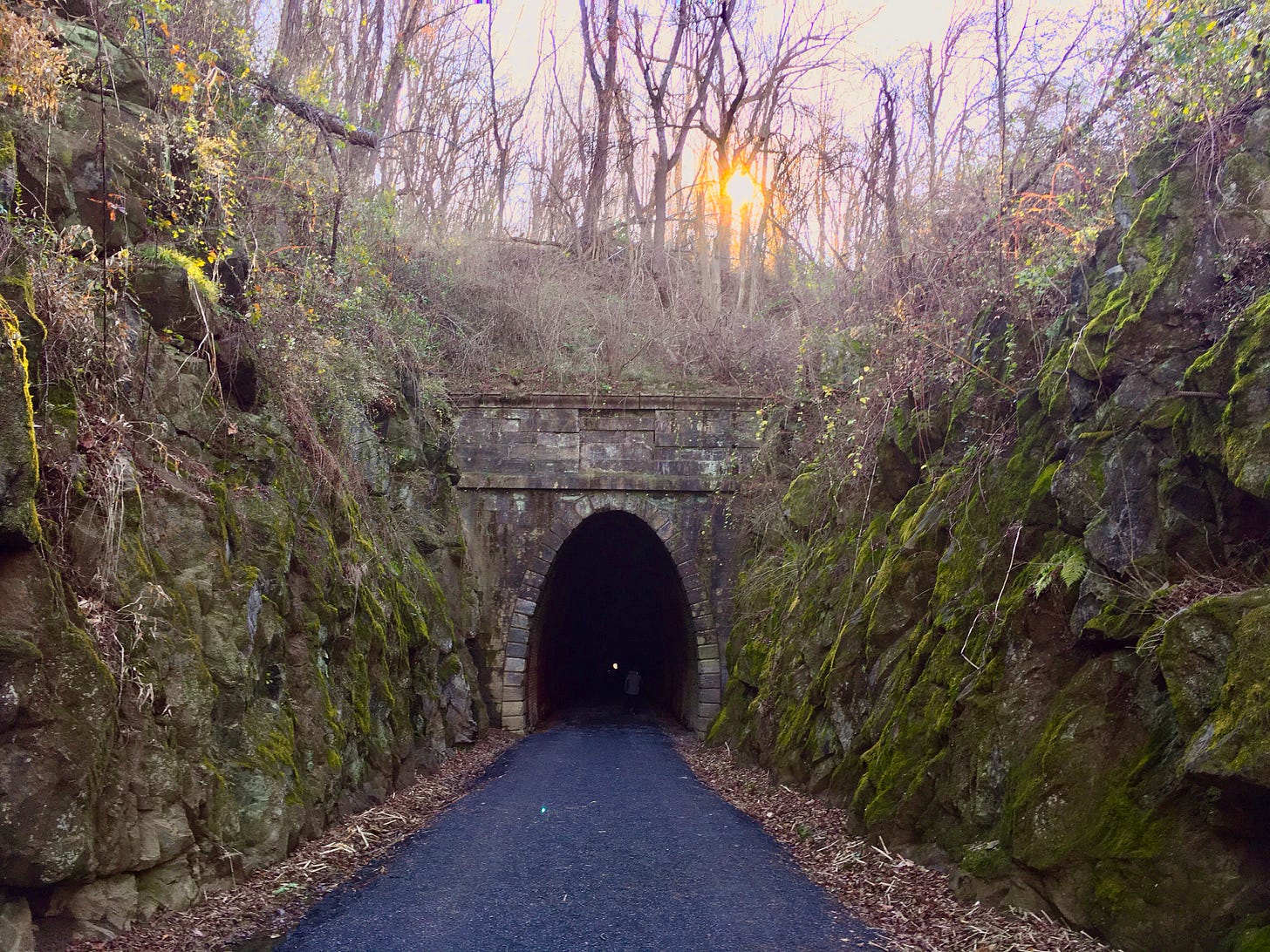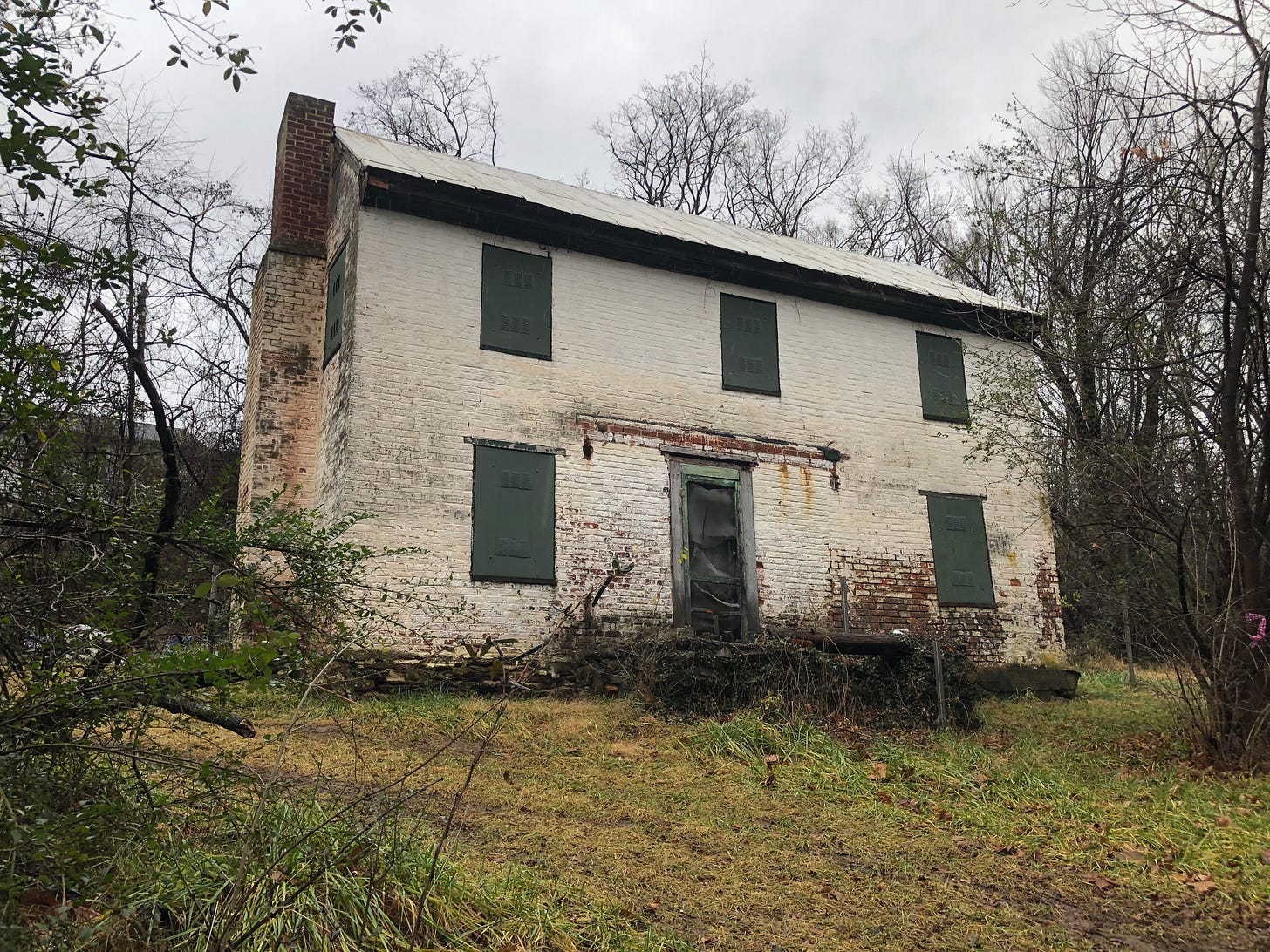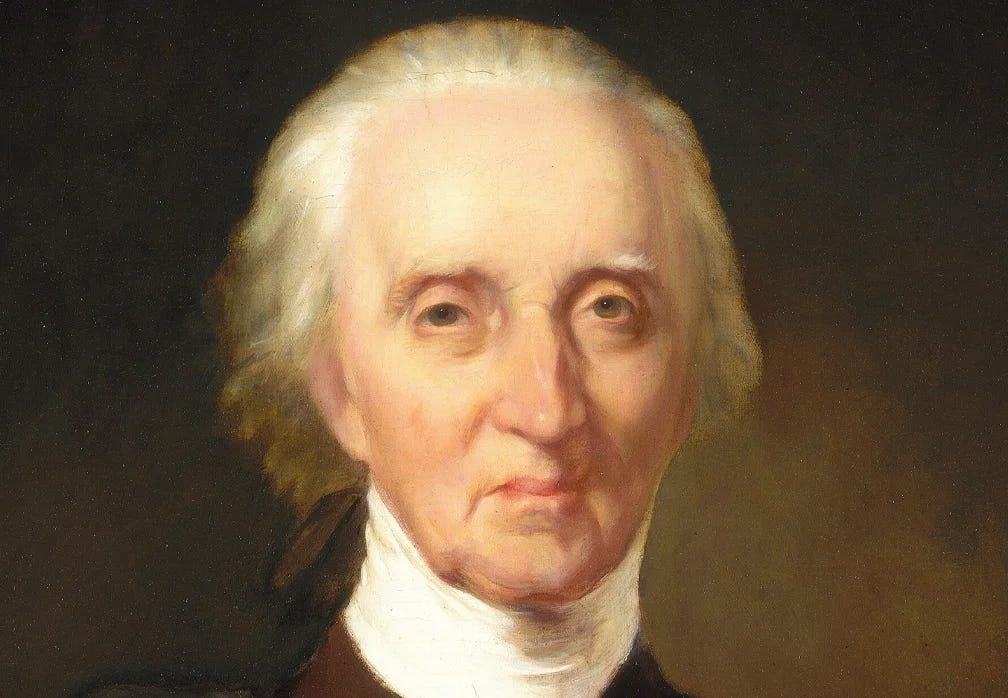The ventilation machine built by William F. Crouse… — Public Domain
…was essential to bring fresh air in to the workers excavating the Blue Ridge Tunnel near Waynesboro, Virginia. — Photo by Bob Kirchman
In the early 1850s French engineer Claudius Crozet embarked on construction of what would become the longest railroad tunnel in the United States. The Blue Ridge Tunnel is 4,237 feet long. Today the tunnels east-west alignment allows for an almost continual flow of air through the straight passage. But in 1853 it became clear to Crozet that blasting in the deep unfinished tunnel would create a problem. Smoke would linger deep in the shaft, making working conditions intolerable.
Looking to an English ventilation device as a model, he sought help making the device from Waynesboro machinist William F. Crouse. Crouse manufactured farm equipment and he was employed by Crozet to build several of the ventilation devices. The machine utilized tubs of water to force foul air into a pipe, removing it from the tunnel. This would draw in fresh, breathable air for the tunnel workers.
William was the son of John and Catherine Crouse. John was a farmer and a blacksmith, Pennsylvania born and the descendent of German settlers. His brick house, constructed in 1812, still stands in the Port Republic area of Waynesboro.
The John Crouse House (1812) in Waynesboro, Virginia. — Photo by Bob Kirchman
Claudius Crozet in Bas Relief at Virginia Military Institute, Lexington, Virginia which he helped found. — Photo by Bob Kirchman
Benjamin Henry Latrobe II’s Thomas Viaduct from "The United States Illustrated," circa 1853, by Charles A. Dana. Public Domain, Republished by Library of Congress
Vision and Viaducts
[click to read]
In 1853 the Push Westward was On
Charles Carroll, 1828 — Painting by Chester Harding
Charles Carroll of Carrollton might well have been the Elon Musk of his day. The last surviving signer of the Declaration of Independence was certainly an influencer. Carroll sponsored advances in agriculture, and, encouraged by his partnership with John, George, and Andrew Ellicott, Carroll promoted the use of crop rotation and pulverized limestone on his large Maryland estate. In 1828, he also laid the cornerstone for one of America’s first railroads, the Baltimore and Ohio Railroad (B&O).
At the time, as connection to the West was a major concern for many in the young nation, Carroll had already helped found the Chesapeake and Ohio Canal Company (C&O Canal). That canal began in Washington, D.C., and followed the Potomac River west. Likewise, George Washington helped build the James River and Kanawha Canal, which was designed to connect the Ohio Valley with the coast by way of Richmond, Virginia. (read more)








